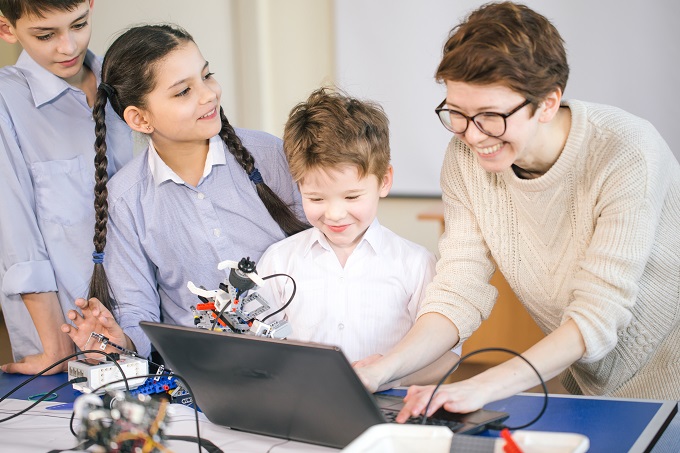
Australian schools, like those in other developed countries, are caught up in what has been called the “cult of speed”. This is largely driven by reporting of the national assessment program, NAPLAN, which is focused on whether there are improvements in test results from one year to the next.
Meanwhile, little attention is paid to the fact that, over the past decade, there has been limited progress in overall results, and students from disadvantaged backgrounds continue to lag behind.
The emphasis on rapid improvement is intensified when education departments require evidence of improved results in as little as eight weeks. In these contexts, it is hardly surprising that schools are tempted to use strategies that accelerate test results for some students but don’t focus on long-term equitable improvement. We argue that “slow schooling” is needed to support learning for all.
Slow movements
Over the past three decades, “slow living” movements have extended beyond slow food, to the realms of sport, sex, travel, research and schools. In reaction to the privileging of immediacy and commercialism in Western societies, slow living movements promote concepts of mindfulness and a consideration of process as well as outcomes.
The “slow education” movement, was founded by Maurice Holt in the UK, who advocated that schools should provide students with time to engage in deep learning, curiosity and reflection. This led advocates of this approach to oppose the use of high-stakes testing and rapid improvement in favour of more time spent developing collaborative and supportive classroom relationships for learning.
Slow schooling
Our idea of slow schooling is not focused on teachers spending more time on particular teaching strategies. Instead, it focuses on the need to provide space for practitioners to work together and engage in the complex thinking needed to find more effective ways of educating hard-to-reach learners.
In his book Thinking Fast and Slow, Nobel prize winning psychologist Daniel Kahneman describes two systems of thinking. System 1 thinking refers to subconscious and automatic processes, as well as emotional responses and those that rely on biases or intuition. System 2 thinking is defined as “slow”, more concerted and conscious thinking. It is the type of thinking that requires your attention, like solving complex mathematical equations, or considering a range of possible implications or responses to your actions.
Drawing on these ideas, we recognise the need for teachers and school leaders to make time for deep consideration of complex matters, such as how to support the learning of every student within a school. Pressure for quick responses tends to lead to thinking that relies on what is already known. Put simply, we need to reduce the pressure on schools to allow people to engage in deeper, more creative thinking about these issues.
Addressing wicked problems
The slow research movement recognises that all knowledge is produced and has effects in a context. It proposes that the best solutions to seemingly “wicked” problems – for example, supporting the participation and learning of 30 students in a classroom – need to take the local context into account and contemplate the range of effects that any changes might have.
Finding solutions to such problems requires teachers to consider carefully the individual interests and aspirations of students in order to understand how they can be best supported. School leaders also need to have the time to develop longer-term plans for creating the conditions for this type of professional learning.
Reasons for optimism
In our new book, Promoting equity in schools, we report how principals from schools in Queensland spoke of the dilemmas they faced within the current policy context. This involves balancing their professional commitment to ensure the progress of all students with pressures to demonstrate rapid improvement, as measured by national accountability measures including NAPLAN results. With these pressures in mind, each of the schools developed their own tactical responses. For example, actively working to recruit more high-performing students.
Our research offers some reasons for optimism. In particular, we concluded that even where worrying policies are in place, with leadership driven by a commitment to equity and a belief in collaborative inquiry, schools can still find spaces to develop more equitable ways of working. We also saw how, despite the dangers involved, critical engagement with accountability data can sometimes help to kick-start improvement processes.
Time to slow down
The intense pressures for short-term improvements, which requires school leaders and teachers to make important decisions quickly, discourages deeper consideration of how those decisions could affect students long-term. The need for fast change is at odds with the collaboration, reflection and evidence-based practice that is needed in order to promote equity in our schools. It is time to slow down.
![]() This article was written by Jess Harris, Senior Lecturer in Education, University of Newcastle; Mel Ainscow, Emeritus Professor of Education, University of Manchester; Nerida Spina, Lecturer in Education, Queensland University of Technology; Suzanne Carrington, Professor in Inclusive Education, Queensland University of Technology. This piece first appeared on The Conversation.
This article was written by Jess Harris, Senior Lecturer in Education, University of Newcastle; Mel Ainscow, Emeritus Professor of Education, University of Manchester; Nerida Spina, Lecturer in Education, Queensland University of Technology; Suzanne Carrington, Professor in Inclusive Education, Queensland University of Technology. This piece first appeared on The Conversation.







